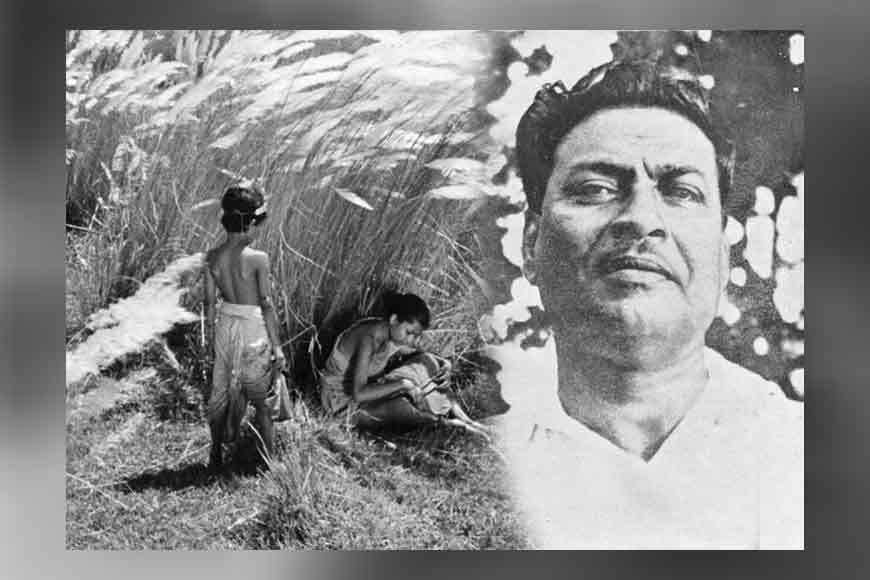When the twain met: Bibhutibhushan and Ray

Pather Panchali will remain a timeless classic, not just because of Bibhutibhushan Bandopadhyay’s soulful display of minute emotions of a family, set in rural Bengal, but for the adaptation of Apu Trilogy on screen by none other than Satyajit Ray. As Akira Kurosawa once mentioned, the movie was like ‘existing in the world without having seen the sun and the moon.’ Bandopadhyay had a rare talent of bringing in the words and world of common village lore to life. Ray was fascinated by that. He again went on to adapt Ashani Sanket, the film set in a village during World War II and the Great Famine of 1943, through the eyes of a young Brahmin doctor-teacher, Gangacharan, and his wife, Anaga. The human scale of a cataclysmic event that killed more than 3 million people and breakdown of traditional village norms under the pressure of hunger and starvation, somewhere struck a chord with the human tale of love and loss that Ray usually portrayed on celluloid.
Pather Panchali was the first film of what came to be known as the Apu Trilogy - the second was Aparajito, in 1956, and the third, Apur Sansar, in 1959. All three were masterpieces of Bandopadhyay, closely weaving hopes and despair of the common man, through protagonist Apu. There is a kind of musical cohesion in the trilogy that Ray made, bringing Apu and other characters to life.In an article Ray once wrote: “I chose Pather Panchalifor the qualities that made it a great book: its humanism, its lyricism, and its ring of truth.” Ray came across Bibhutibhushan’s writings much late in life, in his late twenties, when he designed the book cover of an abridged version for his friend and colleague D.K. Gupta of the Signet Press. Though the world that Bibhutibhushan weaved in the trilogy had slowly faded away by then, generations could still identify with Apu’s quest for life, his strugglesin a big city, his wonder at the beauty of life. This touched a chord with Ray.
What was best about Ray’s tribute to Bandopadhyay, is how he focused his adaptation on the poverty and simple living of a family in rural Bengal, just like the original novel does. Bibhutibhushan had a breath-taking narrative style, where he touched upon the details of every corner of rural Bengal along with the minute emotions that each of us suffer from, be it in death or birth. Ray could build up that atmosphere with his midas touch, from the subtle difference between dawn and dusk, to the stillness that precedes the first monsoon shower.
Reading Bibhutibhushan is like following a lyrical journey of life. Every detail opens up, before one’s eyes like a movie. They were put to life by Ray in scenes where the children follow the village sweet-seller with a dog trailing them and the procession reflected in a pond; Apu throwing a stolen necklace in the pond to save his sister’s secret, Apu and Durga racing through a field of kaash flowers for their first glimpse of a train or Sarbojaya’s outburst after Harihar comes home and learns of Durga’s death. They are all scenes with a contrast, of joy and anguish, of despair and love. It is said Bibhutibhushan added the character of Durga later, while writing the novel. The idea of Durga popped up after he saw a tribal girl at one of the stations where he was waiting for a train and that’s how he brought in a character that took the novel to a new height.
Kurosawa once said “Pather Panchali is the kind of cinema that flows with the serenity and nobility of a big river. People are born, live out their lives, and then accept their deaths. Without the least effort and without any sudden jerks, Ray paints this picture, but its effect on the audience is to stir up deep passions.” True, Bibhutibhushan also could stir up those emotions through his words. It is believed Nishchindipur is fictitious name of his own village Gopalnagar where he grew up. The name carries the inner peace or contentment, as we forever carry his novels and characters in our hearts./p>










